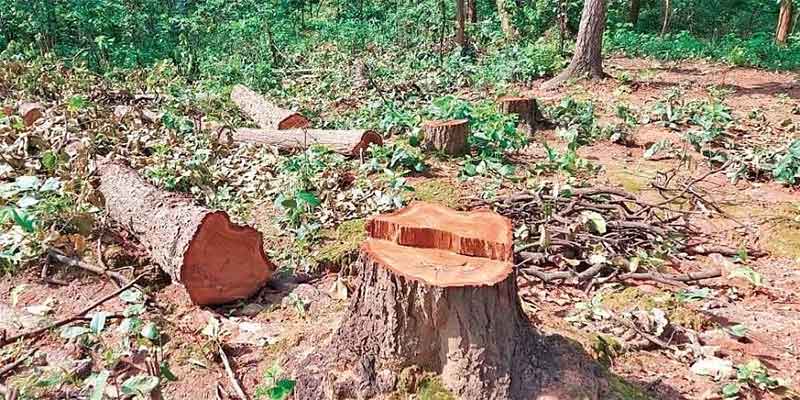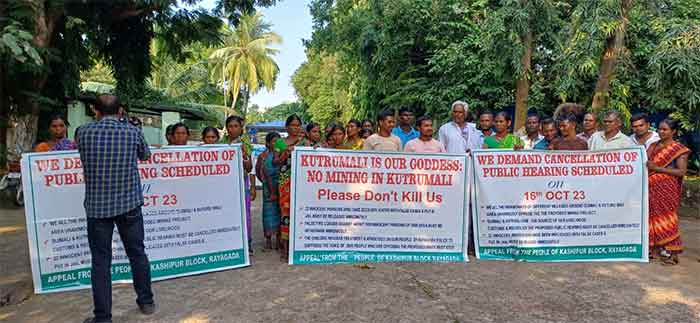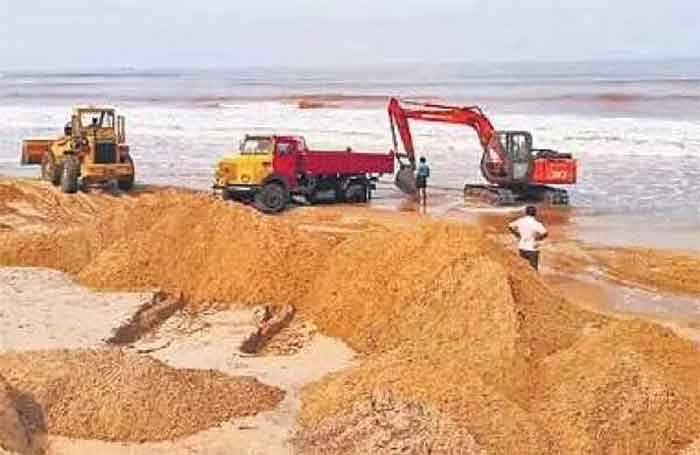How the situation impacts compensation, rehabilitation and resettlement of the families affected by mining projects

The vision for a developed India and Atmanirvar Bharat by 2047 demands more steel to meet the growing need for core sectors like infrastructure, construction and automobiles etc. The mining industry in Odisha has been moving at a high volume. In the case of iron ore, production has increased ten times in the last two decades. It is 14.38 million tonnes in the year 2000-2001 and 140.43 million tonnes in 2022-23. India’s largest iron ore producing State, Odisha’s output will grow to over 200 million tonnes in 2024 as projected by PSUs such as NMDC and OMC. Among the iron ore reserve/producing states, such as Chhatisgarh, Karnataka, Jharkhand and Goa, Odisha has a more than 50 percent share. The operation demands more land, not just for mining but also for ancillary work such as dumping, transportation, storage and many other related works in the buffer and periphery zones. Its ultimate impact will affect most locals, habitations, eco-system and the overall social-economic and social-political environment. A majority of locals who are struggling to cope with the changing conditions have become vulnerable. It is worst in iron ore mining areas, such as Keonjhar district, having been mined for the last few decades with many major iron ore mines. It is observed that, the State and corporate sector which are supposed to have enforced their legal, environmental and social responsibility for the affected areas and communities are rather becoming the violators of such laws and responsibilities. The people who are already historically marginalised for many social and political reasons and have been denied a dignified life that is assured in independent India’s constitution are further pushed to the margin. It is the process of genocide of the indigenous people in Odisha. Our development models do not care for the people in the lowest rank of the society and economic structure. This corporate led development model is not inclusive of the people and destroys the future of marginalised sections. Land is the basic resource of development and dignity of any individual or social group. It gives social identity and political power as well as a base for socio-cultural and customary practices. Unfortunately, in spite of a constitutional mandate, there are hundreds of families without homestead land for a dignified living and the rights of farmers-forest dwellers over the agricultural land have not been recognised, though they have cultivated the land for generations. Revenue related surveys in mining areas show that primarily it is the Adivasies and Dalits, about 70 percent of the population of the district, are supposed to enjoy such rights over land in areas they lived in as early settlers.
Land is the primary reference for caste and tribe certificates as well for getting residential proof, while these days it is required for citizenship also in CAA and NRC. The Right to Fair Compensation and Transparency in Land Acquisition, Rehabilitation and Resettlement Act 2013 recognises land as the primary source of claim for compensation, rehabilitation and resettlement. The rules by the Government of Odisha in 2016 say before commencement of any project, the local revenue authority has to proactively settle land rights dues. The process of recognising and vesting of the Forest Rights Act must also be undertaken for STs and other traditional forest dwellers. The updating of land records must be done through periodic surveys and settlement. But the reality is that, historically, the upper caste/class dominated revenue administration is proactively working for mining companies while neglecting the locals who are largely unaware of their rights and remain unorganised for a political bargain over land rights. But a close interaction by this writer with ST and SC communities in mining areas of Keonjhar in Zoda,Barbil, Banspal and Daitari mines areas found serious lacuna in ensuring land for them. Even the upper part of Keonjhar district is a 5th scheduled area where the STs have a legal right over land and forest. In the change process, when the local communities convert themselves from farmers – forest dwellers to causal mining workers ,they find themselves in mining town slums and live a sub-human life without basic amenities. They are suffering from air and water pollution, though funds are available under DMF/PMKKKY. The mining slums in Joda -Barbil paint a pathetic situation and the lives of women, children and elderly people is miserable. The new slum dwellers are largely the Adivasies of the area of Munda, Bhuya, Santal, Saunti and Juanga category. Some of them are primitive /particularly vulnerable groups. A major chunk of Dalit communities is among the landless families. A few decades back, a majority of them were weavers and marginal farmers, but slowly they got converted to casual workers. The locals mostly belonging to STs, SCs and OBCs are partly engaged as agriculture workers and casual labourers with low wage rates. They complain that some of the mining companies carry out transportation and dumping on their private agricultural land without compensation and most illegally and forcefully occupy their land. Pollution has also affected agricultural activities, particularly paddy cultivation, which is all going to be closed in the coming days with a drastic decrease in production. The free flow of mining waste water over the agriculture field has made the top soil barren for farming. But the farmers are not being compensated for their huge loss.
The loss of forest forced the elephant population to move to the crop fields and habitation areas abruptly and caused the loss of agriculture and human habitation. So, the direct and indirect impact of mining on land-based activities matters the most. While moving towards a developed India, it is equally important to recognise and implement the Constitution that speaks of justice -social and economic, to all our citizens and ensures protection of the marginalised sections for their equal participation in development.
Land Holding status of different social groups in Keonjhar district.
| Category of of holding | SC (TNOH) | SC TAO(ha) | ST (TNOH) | ST (TAO)Ha | Others (TNOH) | Others (TAO)Ha |
| Marginal | 20,261 (<1ha) | 10924 | 97,800 | 62,633 | 196,755 | 124703 |
| Small | 2915 (<2ha) | 4933 | 21235 | 36159 | 47654 | 81364 |
| Semi Medium | 504 (<4ha) | 1546 | 4275 | 13257 | 10053 | 31290 |
| Medium | 60 (<10ha) | 339 | 591 | 3783 | 1863 | 11704 |
| Large | 0 (>10Ha) | 0 | 49 | 819 | 152 | 4105 |
(Total no of operational holdings(TNOH)(Total Area Operated in Hector(TAO,Ha). Agricultural census of Keonjhar district,2011)
Manas Jena ,social activist ,writer and columnist based in Bhubaneswar















































